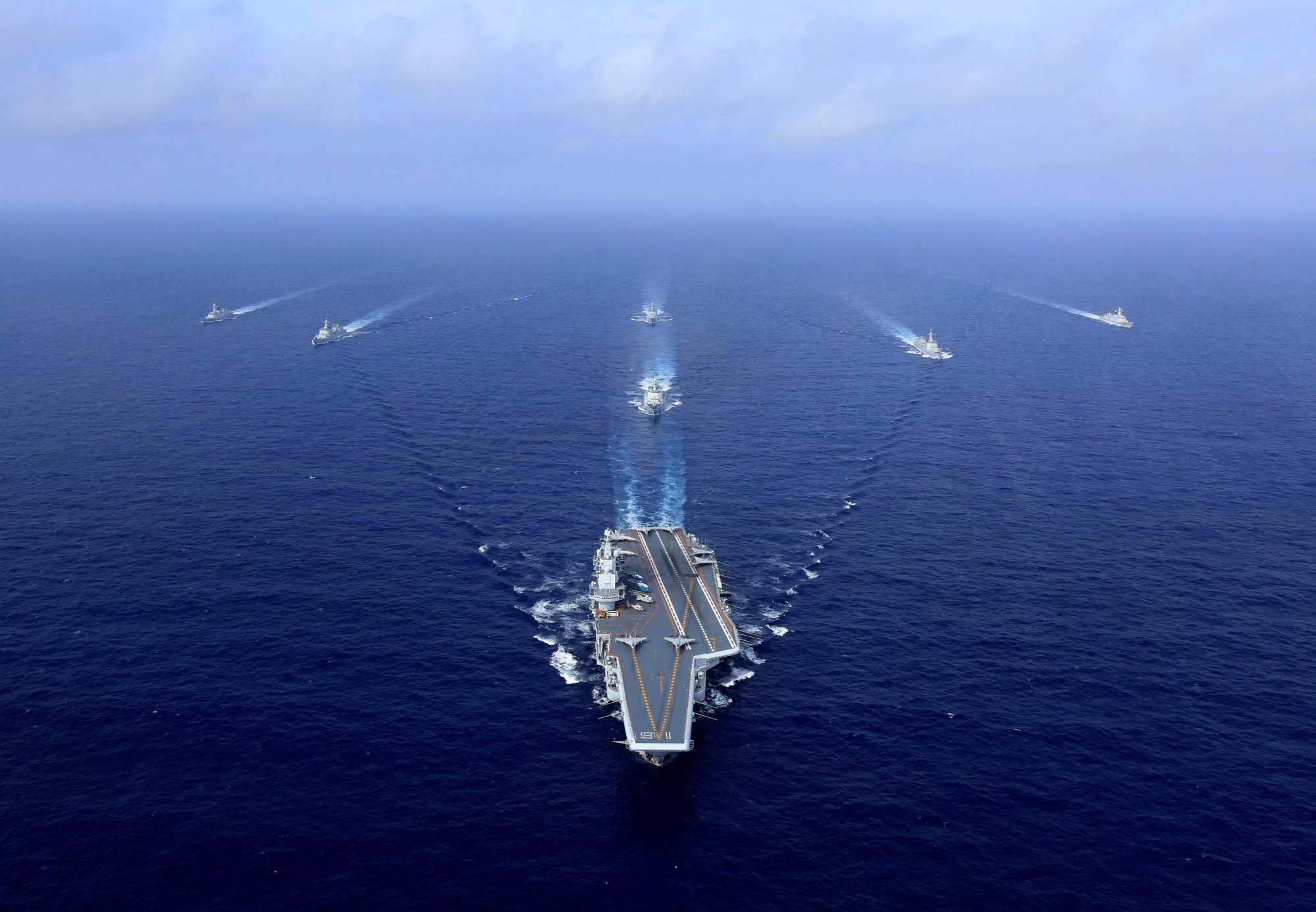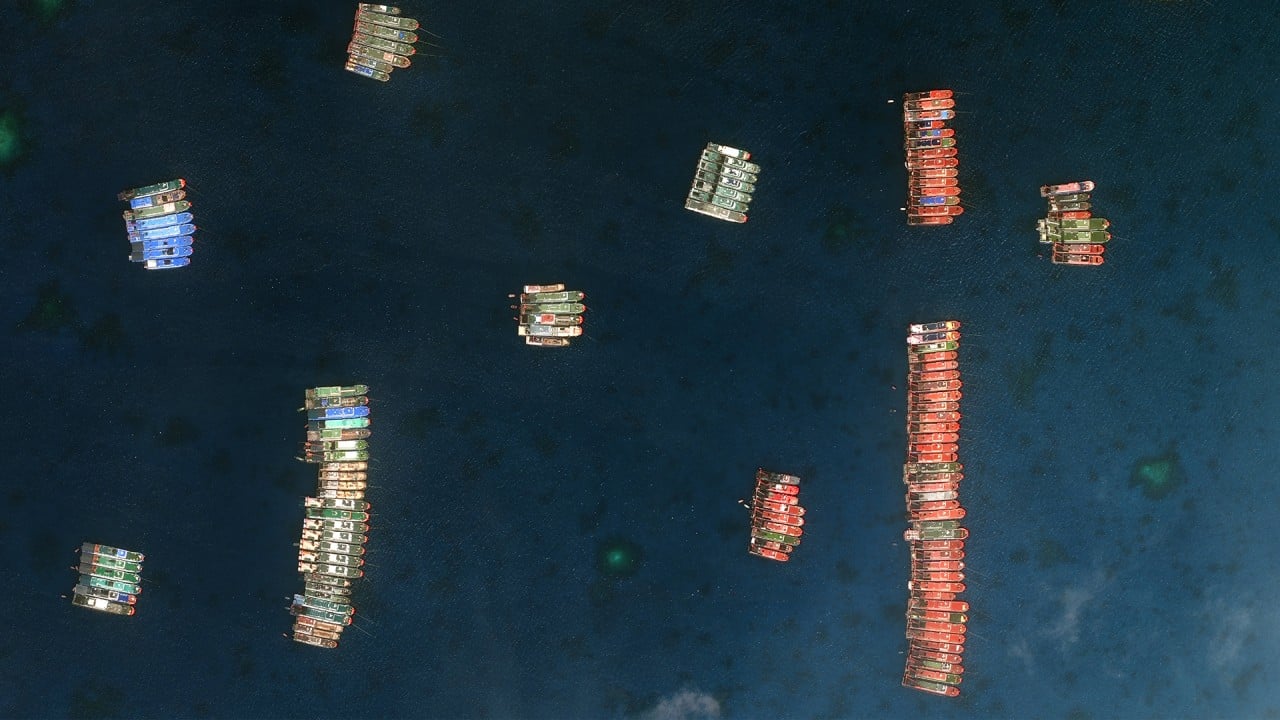
China, US send warships into disputed waters as tensions rise over Whitsun Reef
- US aircraft carrier strike group entered South China Sea and a destroyer was in East China Sea, while Chinese carrier transited through Miyako Strait near Japan
- It comes amid a deepening dispute between Beijing and Manila over the presence of Chinese boats at a reef in the Spratly Islands
Analysts say their naval presence in the Indo-Pacific at the same time highlights the risk of military conflict between the powers, as Beijing asserts its maritime claims in the region more aggressively and Washington focuses its defence strategy on countering China.
The Philippine foreign ministry on Monday said China’s claims that the boats were sheltering from bad weather were “blatant falsehoods” and “clearly [a] false narrative of China’s expansive and illegitimate claims in the West Philippine Sea”.
Manila also rejected Beijing’s assertion that the reef in the disputed Spratly Islands was a traditional Chinese fishing ground and again demanded the boats leave the area, in its exclusive economic zone, immediately.
“For every day of delay, the Republic of the Philippines will lodge a diplomatic protest,” the statement said. The US, Japan and Indonesia also stepped up pressure on China over the dispute last week.
On Sunday, a US aircraft carrier strike group led by the USS Theodore Roosevelt entered the South China Sea from the Strait of Malacca, according to the Beijing-based South China Sea Strategic Situation Probing Initiative, citing satellite data.
The PLA Navy announced on social media on Monday night that the Liaoning was en route to conduct “scheduled exercises” near Taiwan, to “test the effectiveness of troop training, and to improve the capacity to safeguard the country’s sovereignty, safety and development interests”. Similar naval exercises would continue to be organised as planned, it said.

The US also conducted a series of military exercises with its allies in the region last week, including with Japan in the East China Sea, with Australia in the eastern Pacific and with India in the Indian Ocean.
Ben Schreer, a professor of strategic studies at Macquarie University in Sydney, said the US aircraft carrier’s passage in the South China Sea was meant to counter Beijing’s vast claims over the waters and signal to allies, such as the Philippines, that Washington was a “reliable and capable treaty ally”.
India joins French-led naval exercise, revealing clues about Quad’s plans to contain China in Indo-Pacific
At the same time, the Liaoning’s patrol in the East China Sea sought to demonstrate Beijing’s ambitions to use its own carrier strike group to defend what it saw as its core territorial interests, he said.
“It’s a signal to Japan, the US and other powers in the region that the [Chinese navy] is gradually developing a carrier capability, though at present it’s nowhere near [achieving this],” he said.
Collin Koh, a research fellow from the S. Rajaratnam School of International Studies at Singapore’s Nanyang Technological University, said Washington was signalling its commitment to maintaining a credible military presence in the region to its allies and seeking to deter Beijing from “any drastic actions” amid the Whitsun Reef saga.
The US also carried out naval exercises during a stand-off between China and Malaysia in the South China Sea last year, he said.
Koh said the PLA Navy’s activities in the region, including its latest transit in the Miyako Strait, sought to underline its “ability to operate … against perceived American-led containment of China’s maritime interests”.
“The crowding of regional waters with rival maritime forces does create concerns about the risk of an accidental or inadvertent clash,” he said. “The onus will again be on … both sides to professionally interact with each other.”
Xue Chen, a research fellow at the Shanghai Institutes for International Studies, echoed that view, saying there was a risk of human error in “high-stress situations” and noting the US air and naval forces had increased the frequency and scale of their activities in the East and South China seas and were going closer to Chinese territory.
He said the USS Theodore Roosevelt’s presence in the South China Sea appeared to be a message to China but did not believe it was related to the Whitsun Reef dispute.




